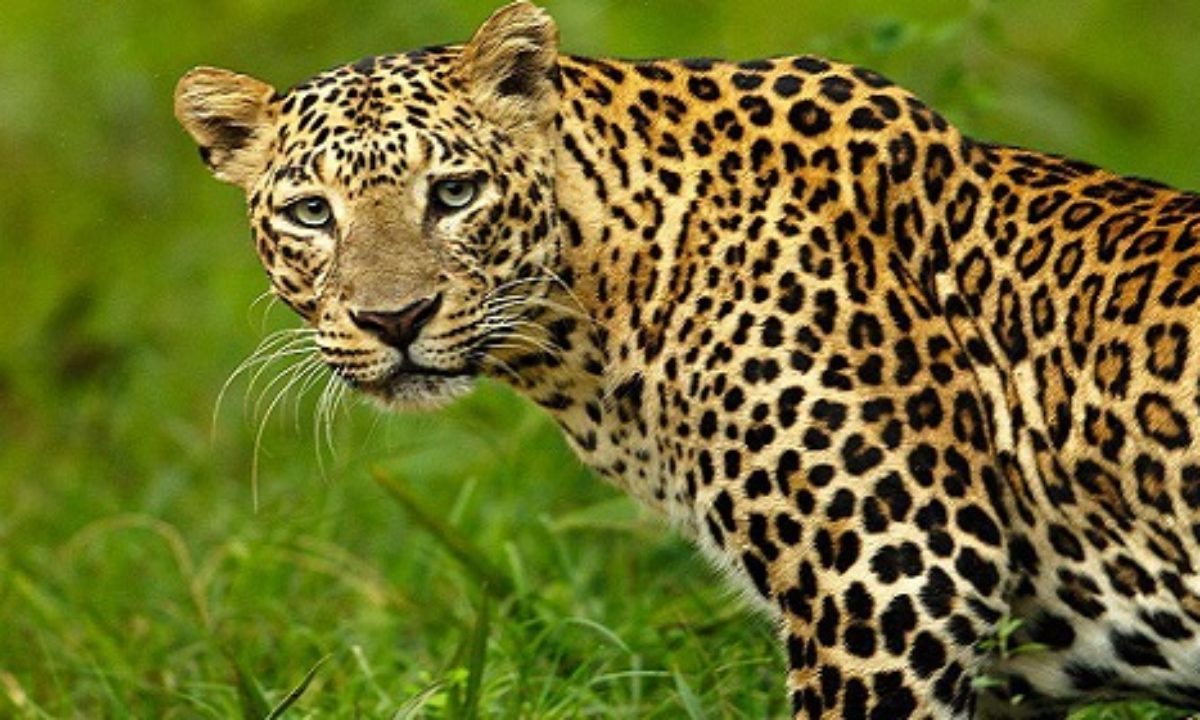5 Facts about Leopard
5 Facts about Leopard :Leopards are among the Big Five creatures inhabiting numerous national parks in East Africa and the broader African continent. They are classed as Panthera pardus and represent one of the five extant species within the genus Panthera. Leopards, unlike other wild cats, possess relatively short legs and elongated bodies, accompanied by a big skull; they are sometimes compared to and confused with jaguars. Leopards and jaguars, both referred to as melanistic black panthers, differ in several aspects: leopards are marginally smaller, possess a lighter physique, exhibit well-camouflaged fur, display opportunistic behavior, maintain a broad diet, and demonstrate strength along with adaptability to various habitats, including rainforests, arid regions, and montane areas.

The fur of leopards is adorned with rosettes, and the coloration of their skin ranges from pale yellowish to dark golden, interspersed with dark spots (rosettes). Leopards inhabiting arid regions exhibit hues of pale cream, yellowish, ochraceous, and rufous, while those residing in forests and mountainous areas display significantly darker and deeper golden tones. The leopard’s skin has spots that diminish towards the white underbelly and the inner and lower regions of the legs. The rosettes of leopards vary in shape according to their geographic region: those in East Africa are round, those in Southern Africa are squarish, and those in Asia are larger.
Leopards are swift felines capable of reaching speeds of 58 kilometers per hour; they exhibit both grace and ferocity in their hunting methods. Leopards are readily observable throughout East Africa, particularly inside many national parks across different areas.
Leopards inhabit Queen Elizabeth National Park, Kidepo Valley National Park, Lake Mburo National Park, Murchison Falls National Park, and Semuliki National Park in Uganda.
Leopards inhabit Samburu National Park and Maasai Mara National Reserve in Kenya.
Leopards inhabit Serengeti National Park, Ngorongoro Conservation Area, Tarangire National Park, and Lake Manyara National Park in Tanzania.
Leopards inhabit Akagera National Park in Rwanda.
Leopards consistently rank among the most desired animals for tourists on game viewing safaris in East Africa. These remarkable creatures are the focus of this essay, which highlights the facts that contribute to their allure. The following facts are enumerated below.
Leopards are lonely creatures.
In contrast to lions, which are sociable creatures, leopards are solitary felines that lead an individualistic existence. Leopards are typically observed traversing the grasslands of their habitats solitarily; they are only encountered in pairs, consisting of a male and a female, during the mating season. When a female is prepared for mating, she signals her readiness to her mate through the scent of her territorial markers, including her urine. The mating phase lasts 4 to 5 days, during which the male and female leopards hunt collaboratively and mate 70 to 100 times daily. This period is succeeded by a gestation duration of 3 months, resulting in the birth of offspring, of which only 2 to 3 are likely to survive. Following mating and gestation, leopards return to their solitary existence after giving birth to cubs.
Leopards are the diminutive members of the big cat family.
5 Facts about Leopard Among the felidae family, which includes lions, jaguars, cheetahs, and leopards, leopards are the smallest in size. Leopards predominantly inhabit trees to evade the scorching midday heat and to consume their prey undisturbed. Their little stature facilitates their climbing abilities, making them the most nimble climbers within the feline family. A leopard’s body averages 92 to 190 centimeters (3 to 6.2 feet) in length, with a tail measuring approximately 99 centimeters; both length and weight vary by sex. Males are typically larger and heavier than females, with males measuring 60-70 cm and females at 57-64 cm in length. Male leopards weigh between 37 to 90 kilograms, while females range between 28 and 60 kilograms. Despite being the smallest in the feline family, their size does not diminish their power, as they are capable of transporting prey weighing around 50 kilos to their arboreal habitats.
Leopards exhibit a non-selective diet.
Leopards exhibit a broad carnivorous diet, demonstrating a lack of selectivity compared to other felids. Their diet includes reptiles such as snakes, fish, and a variety of medium-sized mammals, including warthogs, zebras, antelopes, wildebeests, and rodents, among others. Leopards can survive without direct water sources, as they obtain the majority of their hydration from their prey, which is essential for their survival.
Leopards are stealthy ambush predators.
5 Facts about Leopard , Leopards are recognized as ambush predators in their hunting strategies; similar to other felids such as lions, cheetahs, and jaguars, they capture their prey through hunting. Leopards are swift creatures capable of reaching speeds of 35 miles per hour, providing an advantage during their hunting endeavors. They typically track their prey from a short distance, poised to ambush should the target approach their vicinity. Upon proximity to the victim, leopards execute a rapid and brutal maneuver, seizing the animal’s neck and delivering a lethal break. Leopard offspring commence hunting at 3-4 months of age, with their abilities and strategies refined with time.
Leopards are versatile felines.
Leopards are recognized as adaptable felines, enabling their survival across various habitats. They inhabit numerous national parks in Africa, which encompass diverse flora types, including rainforests, woodlands, savannas, mountainous regions, shrublands, and wetlands. Leopards exhibit remarkable adaptability to many environments, which accounts for their widespread presence in various parts of Africa, in contrast to other felines like lions that inhabit established territory near aquatic resources.
Leopards are remarkable creatures readily observable on game drives in East African parks. To secure this extraordinary experience, request a safari quote from Gorilla Trekking in Africa, send quote info@gorillatrekkinginafrica.com
